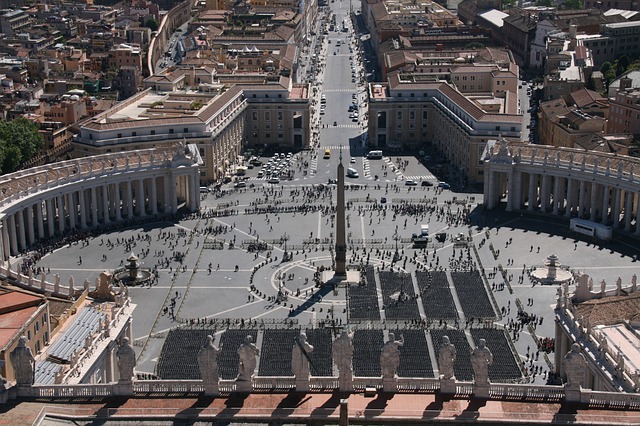
St. Peter’s Square – The Legend of the Vatican Obelisk
The famous St. Peter’s Square, a remarkable example of Baroque architecture and urban planning, is dedicated to the homonymous saint and is a daily meeting point for thousands of Catholics from all over the world.
This square has a round oval shape, the union of two semi-circles that intersect in their respective centers joined by two circular arches. The idea of the round oval, by Bernini, in strong contrast to the longitudinal basilica, served to support the thrust of the sequence formed by the church and its parvis.
The Vatican Obelisk, which stands at the center of the square, is of Egyptian origin and comes from the city of Heliopolis; it was first placed in Alexandria and later brought to Rome by Caligula in 40, and placed on the spine of Nero’s Circus. It remained in this position even after the circus fell into disuse, occupied by a necropolis. Then, it was found next to the ancient basilica of St. Peter, near the Rotunda of St. Andrew. It was then moved and raised by Pope Sixtus V in 1586.
According to a legend, when on September 10, 1586, the obelisk was hoisted onto its present base in St. Peter’s Square, the ropes that supported it threatened to break. From the crowd that had flocked to see the event, there was a cry: “Water to the ropes!”. It was the suggestion of a captain from Sanremo, a certain Bresca, who knew how ropes behaved in contact with water.
Tradition has it that thanks to his advice the operation was completed and he was rewarded by Sixtus V with a grace: the privilege, for himself, his family and his descendants, to supply the Vatican with palms for the Palm Sunday ceremony. Privilege maintained even today.
Enjoyed this trivia? If you want to read more, about thousands of cities, download Secret Maps!
And if you want to listen to something interesting, try the first Travel Podcast Platform. Try Loquis!

